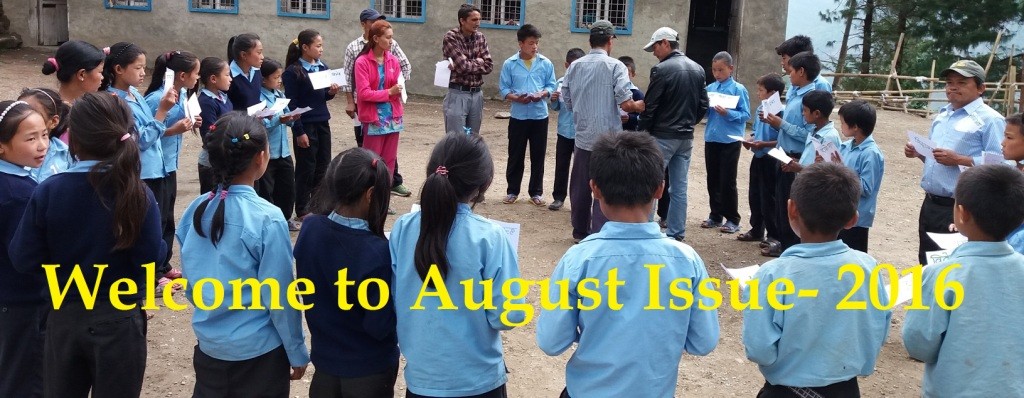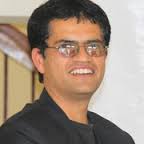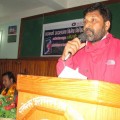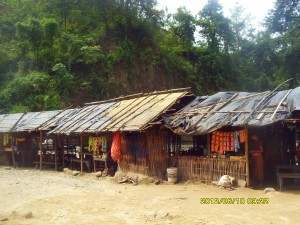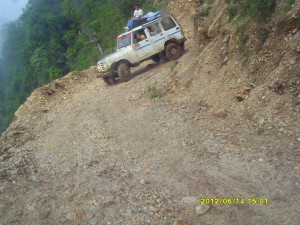
Globalisation and rapid technological advancement have created a new economy, which is driven by knowledge. In this regard, Information and Communication Technology (ICT) has become undoubtedly the critical enabler of a knowledge-based economy for many nations. It is acknowledged that for Ghana to make any appreciable progress in its socio-economic development efforts, substantial resources will need to be directed at improving educational delivery. The key role that Information and Communication Technologies (ICTs) can play in widening access to and improving the quality of education at all levels in Ghana continues to be recognised as a key priority area. Essential elements include literacy education, facilitating education delivery and training at all levels, opening opportunities for content creation and open sharing to expand knowledge resources.
For many years, the Government of Ghana has been a signatory to a number of reports, policies and initiatives (international, regional, national and sector). The policies have a bearing on ICT use within the education sector and have also broadly emphasised the role of education and training in achieving the wider development goals and agenda of the country. The country, therefore, is implementing an ICT in Education Policy as a guide to which ICTs can be exploited under the guidance of the Ministry of Education and its sector stakeholders, in an efficient and coordinated effort to support the education sector’s own goals and operations. As well as, within the framework of the national development agenda, the Ministry of Education has implemented a number of policy and programme interventions that aimed at increasing access and equity and improving the quality of education. That includes, such as the integration of ICT in education to facilitate effective teaching, learning and management through the provision of computer labs, the internet and network connectivity to schools, the supply of laptops to teachers and students, and capacity development of teachers.
The Ghana ICT for Accelerated Development (ICT4AD) Policy has one of the aims to transform the educational system to provide the necessary educational and training services, an environment capable of producing the right types of skills and human resources required for developing and driving Ghana’s information, and knowledge-based economy and society. Thus, the Government of Ghana is committed to a comprehensive programme of rapid development, utilisation and exploitation of ICTs within the educational system from primary school upwards. A strategy implemented as the introduction of computers into all primary, secondary, vocational and technical schools as a result of the educational reforms in 2007. The ICT4AD also seeks to promote electronic distance education, training and virtual learning systems to complement and supplement face-to-face campus-based educational and training systems.
The latest Education Reform 2007 highlights ICTs as an important cross-cutting issue in the sector and seeks to address this through several strategies. The policy initially aims to equip all educational institutions with computer equipment and ICT tools in a prioritised manner and then to implement ICT programmes at the pre-tertiary level in a phased approach. The strategy makes the schools already possessing 15 adequate laboratories and teachers as a base to gradually expand to other schools when ICT equipment and teachers become available. For this, the policy priorities adequately resourcing computer science and IT departments in public tertiary institutions to enable them to produce skilled human capital to meet the requirements of the industry. Within these reforms, it is also expected that the introduction of ICT into schools should cover the teaching of ICT skills to all students, preparing students for the ICT professions and enhancing teaching and learning through ICTs.
ICT & COMPUTER SCIENCE IN SCHOOLS
To facilitate the sustenance of ICT and to create a critical mass of interest in the subject as an important subject in Ghana’s education curriculum, the treatment of ICT at all levels of the school system is of prime significance. To this end, the following policy prescription was proposed under this framework:
- a) A subject labelled, as Information & Communication Technology (ICT) shall become a primary subject to be taught from basic to senior high schools in the country. The content of this course shall range from basic appreciation, and hands-on experience from the primary schools to computer literacy and applications use at the senior high school level.
- b) For those learners desirous of pursuing further studies at the tertiary level or in specialised professional schools, an elective “Information & Communication Technology” course shall be offered at the Senior High Schools.
- c) The content of the ICT general courses at all levels and the Information & Communication Technology course at the Senior High School shall be determined by the Curriculum Research and Development Division, in collaboration with the requisite accreditation bodies including the Universities and Polytechnics to ensure acceptability and admission at the requisite
- d) The reclassification of the ICT as core and elective subjects would also need to be discussed with the West African Examinations Council for a suitable timetable to be planned for the conduct of the first examination within an agreed timeframe.
- e) There must be a strong teacher development programme instituted to create the mass of professionals to handle the programme. Granted that the ICT field is a high yield area. Teacher retention is expected to be a major challenge because of the generic value of such skills and the high level of expected turnover and migration. It might be especially in the private sector and industry unless specific retention incentives are planned and programmed for those teachers who would be recruited or trained to teach the subjects mainly elective.
ICT has become an important medium for communication and work in a variety of areas. Knowledge of ICT has, therefore, become a prerequisite for learning in schools in the current world. The syllabus for ICT in the primary education (PRIMARY 1 – 6) is designed to predispose primary school students to basic skills in Information and Communication Technology (ICT) so as for building the foundation for further learning in the subject as they move into second cycle education and beyond. The syllabus covers basic topics in ICT and offers hands-on activities and keyboarding skills to build the required ICT foundation. The teaching syllabus for introductory ICT (Junior High School) is designed to provide basic skills in Information and Communication Technology syllabus covers basic topics in ICT and offers hands-on activities that will help students acquire basic skills in ICT. The syllabus is designed to help the pupil learn basic ICT literacy, develop interest and use ICT in learning other subjects, use the Internet effectively for information, follow basic ethics in the use of ICT and acquire keyboarding skills. The syllabus for Information and Communication Technology (CORE) is designed to provide basic skills in Information and Communication Technology (ICT) for Senior High School (SHS) students. It is expected that the knowledge and skills gained in this course will help students use ICT in almost all their courses at school. The syllabus covers selected basic topics in ICT which offer hands-on activities to help students acquire the required ICT skills for the job market and social interaction in the global village. The students will also apply the skills in solving everyday problems in their academic and social life. The teaching syllabus for Information and Communication Technology (ELECTIVE) is designed to provide advanced skills in Information and Communication Technology (ICT) for Senior High School (SHS) students. This syllabus has been planned at a higher content level than the ICT content at the Core ICT level. This has been done to equip students with the necessary knowledge and skills for the job market and for pursuing further ICT course.
To give meaning and effect to the stated desire of the Ministry and the Ghana Education Service, Ghana becomes a solid member of the community of nations that have embraced ICT as an integral resource in its educational system. The Ministry shall invest in the effort to ensure that attitudinal deficiencies and non-progressive handling of the ICT phenomenon by persons in authority who (in reality) have no understanding of the subject are highly discouraged. School leaders, teachers, learners and parents alike must be groomed to appreciate the contemporary surge in ICT usage and applications and appropriately groomed to harness the power of ICT for the better and positive advancement of education in Ghana rather than put impediments via uninformed or ill-thought-out regulations. Ghana cannot be a country that claims or intends to compete on an equal footing with others (even if it is a small measure of handicap) if its response strategies to ICT issues end up ultimately creating chasms in knowledge to the detriment of the country. The teaching of ICT in Ghanaian schools has come to stay, and examinations in the subject are examined at the Basic Education Certificate Examination and at the West African Senior School Certificate Examination.
Bibliography
Ghana for ICT Accelerated Development (ICTAD) policy June 2003
Ministry of Education ICT IN EDUCATION POLICY, August 2015
The author: Kofi Ayebi-Arthur is a PhD in e-learning and Digital Technologies. He is a Senior Lecturer in Computer Science Education and Head of Department of Mathematics and ICT Education at the University of Cape Coast, Ghana. He teaches both undergraduate and postgraduate courses and supervises undergraduate and postgraduate students’ project work and thesis.




 I would like to comment mainly on two points when reflecting back the Choutari’s seven years. First, Choutari has been able to groom a new generation of scholars capable of writing on topics they have read about in others contexts or learned in their university classrooms. We did not have a stronger tradition of academic writing in TESOL and applied linguistics in the context of Nepal in the past. The Journal of NELTA was there, but young Nepali scholars did not consider themselves qualified enough to write for the journal. I had a similar view when I completed my M. Ed. In 2003. There still is a popular assumption that only experienced ‘scholars’ write for the journal, and the younger scholars are positioned in the receiving end of the journal readership. Since the starting of this webzine, this assumption has been questioned, renegotiated and redefined. I can see a whole lot of new scholars turning themselves into academic writers with greater confidence, refined skills, and thoughtful pedagogical tips. Second, the traditional mode of printing and publication in Nepal reached only to a small group of readers, usually with a long time gap. Consider, for example, the NELTA journal we have. It includes a collection of homegrown scholarship, but we have to wait for one year to read about ten or so articles. Webzine like the ELT Choutari has again challenged the tradition, expanding its reach to a wider audience, with a large number of readable articles. This again has promoted a new generation of writers and readers, who necessarily are not the university professors.
I would like to comment mainly on two points when reflecting back the Choutari’s seven years. First, Choutari has been able to groom a new generation of scholars capable of writing on topics they have read about in others contexts or learned in their university classrooms. We did not have a stronger tradition of academic writing in TESOL and applied linguistics in the context of Nepal in the past. The Journal of NELTA was there, but young Nepali scholars did not consider themselves qualified enough to write for the journal. I had a similar view when I completed my M. Ed. In 2003. There still is a popular assumption that only experienced ‘scholars’ write for the journal, and the younger scholars are positioned in the receiving end of the journal readership. Since the starting of this webzine, this assumption has been questioned, renegotiated and redefined. I can see a whole lot of new scholars turning themselves into academic writers with greater confidence, refined skills, and thoughtful pedagogical tips. Second, the traditional mode of printing and publication in Nepal reached only to a small group of readers, usually with a long time gap. Consider, for example, the NELTA journal we have. It includes a collection of homegrown scholarship, but we have to wait for one year to read about ten or so articles. Webzine like the ELT Choutari has again challenged the tradition, expanding its reach to a wider audience, with a large number of readable articles. This again has promoted a new generation of writers and readers, who necessarily are not the university professors.
 As ELT Choutari enters into 8th year, we would like to thank our valued contributors and readers for their continued support. The ELT journey without their support was never possible to accomplish seven years. The ELT Choutari today has won acclaim for its commitment to contributing to discourses focused on various issues related to English Language Teaching and Education.
As ELT Choutari enters into 8th year, we would like to thank our valued contributors and readers for their continued support. The ELT journey without their support was never possible to accomplish seven years. The ELT Choutari today has won acclaim for its commitment to contributing to discourses focused on various issues related to English Language Teaching and Education. I think Choutari has made unique contributions to Nepali ELT discourse. The community had a great journal, and we also had an active listserv; but we wanted to provide colleagues a place to share ideas that was more public/open and interactive, where especially younger colleagues could contribute their ideas and experiences and run conversations. Many scholars who chose to run this blogzine also had the opportunity to practice publication and leadership skills while serving the profession. This publication has slowed down a little bit, but I am confident that new scholars will take the baton forward. In fact, I also hope that more venues like this will emerge and make new kinds of contributions to the field of ELT in Nepal.
I think Choutari has made unique contributions to Nepali ELT discourse. The community had a great journal, and we also had an active listserv; but we wanted to provide colleagues a place to share ideas that was more public/open and interactive, where especially younger colleagues could contribute their ideas and experiences and run conversations. Many scholars who chose to run this blogzine also had the opportunity to practice publication and leadership skills while serving the profession. This publication has slowed down a little bit, but I am confident that new scholars will take the baton forward. In fact, I also hope that more venues like this will emerge and make new kinds of contributions to the field of ELT in Nepal. Babu Ram Basnet Mahendrodaya Secondary School, Salyan, Solukhumbu
Babu Ram Basnet Mahendrodaya Secondary School, Salyan, Solukhumbu Chandra Singh Dhami Manthali Higher Secondary School, Manthali, Ramechhap
Chandra Singh Dhami Manthali Higher Secondary School, Manthali, Ramechhap Kamal Raj Basyal Krishna secondary school, Peepaldada-Jheskang, Palpa
Kamal Raj Basyal Krishna secondary school, Peepaldada-Jheskang, Palpa  Durga Prasad Pandeya Padmodaya Public Model Secondary School, Ghorahi, Dang
Durga Prasad Pandeya Padmodaya Public Model Secondary School, Ghorahi, Dang Khagendra Nath ‘Biyogi’ Bhairab Higher Secondary School, Jhota, Bajhang
Khagendra Nath ‘Biyogi’ Bhairab Higher Secondary School, Jhota, Bajhang
